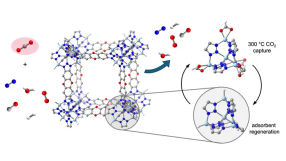Carcinogenic effect of inhaled formaldehyde sufficiently documented
BfR presents results of scientific assessment and recommends new classification
formaldehyde is produced on a large scale around the world and is present in many consumer products. Small amounts of the substance are also formed during cell metabolism in man and animals. Formaldehyde is harmful; it irritates the mucous membranes and can trigger cancer in the nasopharynx when it is inhaled. These are the results of an assessment of new studies presented by the Federal Institute for Risk Assessment . The Institute believes that there is sufficient evidence that this substance can trigger tumours in the nasopharynx when inhaled. It, therefore, proposes a change to the current classification. The harmful action of formaldehyde depends on the concentration. "Scarcely any carcinogenic effect is to be expected at indoor air levels of or below 125 micrograms formaldehyde per cubic metre", said the President of the Federal Institute, Professor Dr. Dr. Andreas Hensel. "However, repeated, clear exceeding of this value may entail risks to health."
Results from animal experiments pointed to a carcinogenic effect in man. However, in numerous epidemiological studies no elevated cancer risk could be detected. Formaldehyde was, therefore, classified as a substance with "a reasonable suspicion of carcinogenic potential". More recent, highly comprehensive studies on workers in the USA have now, however, confirmed an elevated, exposure-related mortality rate caused by tumours in the nasopharynx. Cases of spontaneous tumours are rare in human beings with the exception of some occupational exposure situations. Following its reevaluation the International Agency on Research of Cancer, IARC, therefore proposed a reclassification of formaldehyde as a human carcinogen. It has not yet stated its reasons.
The study results prompted the Federal Institute for Risk Assessment to reassess the carcinogenic risks linked to formaldehyde. To this end, it commissioned an expert report from the German Cancer Research Centre in Heidelberg. Like the report the Institute comes to the conclusion that this substance can trigger cancer in man if inhaled and suggests a corresponding classification. This estimation is shared by the agency in France responsible for assessing this existing substance.
The carcinogenic action of formaldehyde leads to a change in genetic information. In the past a "simplified approach" was used for the assessment of substances of this kind. Every level is deemed to be harmful and no threshold value is established. For its reassessment BfR chose a new conceptual approach which permits more differentiated consideration. The carcinogenic action of formaldehyde is based namely on two biological mechanisms: the cytotoxic effect to which the body responds with cell proliferation, and a change in genetic information. Both mechanisms develop joint action from a specific level upwards. Based on data obtained from animals and man, BfR has, therefore, established a so-called "safe level" on the basis of the two mechanisms of action. It is 0.124 milligram per cubic metre indoor air. An air concentration up to this level is deemed to be a concentration at and below which an elevated risk above the background risk is practically no longer to be expected. By contrast, repeated, clear exceeding of this level may entail health risks.
For the purposes of risk assessment from the consumer protection angle, an estimation of exposure of human beings in their home environment is needed. The available data show that pressboard sheets, along with other building materials, still rank amongst the more important sources of exposure to formaldehyde.
The European Commission will decide on the definitive classification of formaldehyde.
Other news from the department science
These products might interest you

Anopore™ by Cytiva
Precise filtration made easy with Anopore inorganic membranes
The aluminum oxide filter membrane that can increase the purity or yield of your analyte

Hahnemühle LifeScience Catalogue Industry & Laboratory by Hahnemühle
Wide variety of Filter Papers for all Laboratory and Industrial Applications
Filtration Solutions in the Life Sciences, Chemical and Pharmaceutical Sectors

Get the chemical industry in your inbox
From now on, don't miss a thing: Our newsletter for the chemical industry, analytics, lab technology and process engineering brings you up to date every Tuesday and Thursday. The latest industry news, product highlights and innovations - compact and easy to understand in your inbox. Researched by us so you don't have to.


























































